How to Buy a Good Pocketknife or Multitool
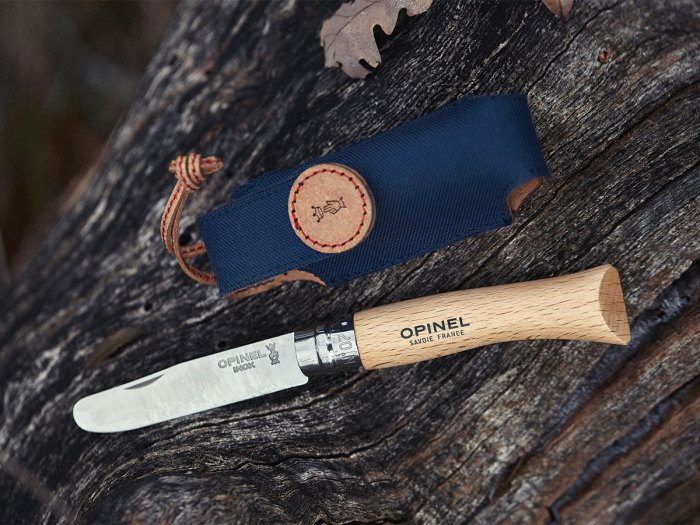
Opinel’s No.07 My First Opinel Folding Knife ($17, opinel-usa.com) is sharp but without a point. The 3.5-inch blade is made from Sandvik stainless steel, and it holds an edge. The outdoors version ($26, scoutshop.org) also has a built-in whistle to call for help in an emergency.
With proper training, many Scouts can use a knife — a valuable tool for camping or working on a whittling project. A multitool provides multiple blades and other tools. Examples are saws, drivers and even forks and spoons.
A knife is not a toy. If you’re a Bear, Webelos or Arrow of Light Cub Scout, earn your Whittling Chip. If you’re in Scouts BSA, earn your Totin’ Chip. Then you will know how to safely carry and use one of these tools.
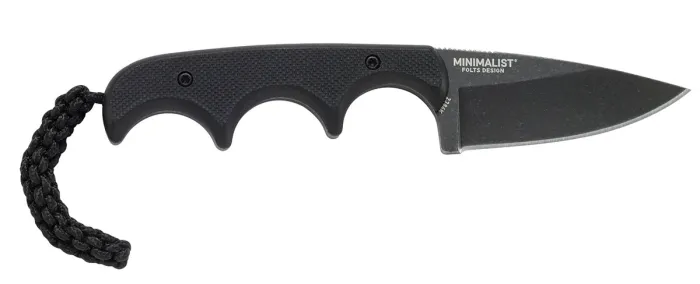
The CRKT Minimalist Drop Point ($36, crkt.com) has a 2-inch fixed blade with a tough handle that’s comfortable to hold. The carbon-steel blade sharpens quickly, and the half-ounce durable thermoplastic sheath has multiple mounting options.
KNIFE BASICS
There are several types of knives.
All-purpose folding pocketknives are common in Scouting. Most come with tools such as a can opener, screwdriver, tweezers and, of course, knife blades — all in one compact package. Though they can be extremely handy, a downside is the knife blade doesn’t lock into place, so it may fold up on your hand while you’re using it.
Lockbacks are simple folding knives with a single blade that can be locked. So you get the benefits of a sturdy fixed blade-style knife but in a convenient pocket-size package that can be folded open with just one hand.
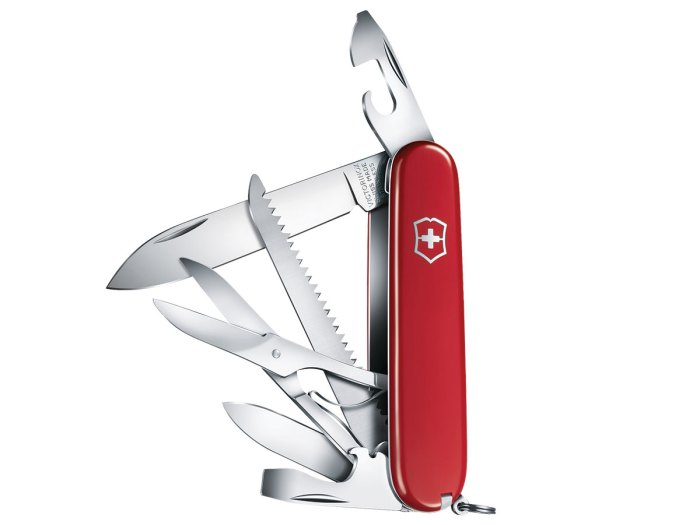
Scouts have been using Victorinox Swiss Army knives for a long time. The Victorinox Swiss Army Huntsman ($50, victorinox.com), a multitool with first-aid functions, has a suite of transitional tools, including a can opener, scissors and tweezers — plus large and small blades, saw, awl, leather punch and more. It pretty much has everything you need.
Fixed blades, are no-nonsense knives with a beefy handle and stationary blade. If you need a knife to accomplish the everyday tasks you come across in the outdoors, from whittling on things and cutting materials to spreading peanut butter on your sandwiches, a short, no more than four-inch-long, fixed-blade knife will accomplish all of that. Avoid large sheath knives; they are heavy and awkward to carry.
You’ll also find specialty knives such as river rescue knives with serrated blades for slicing rope, whittling knives designed for carving wood, and multitools, which are compact, handheld tool boxes. Most are built around a pair of folding pliers.
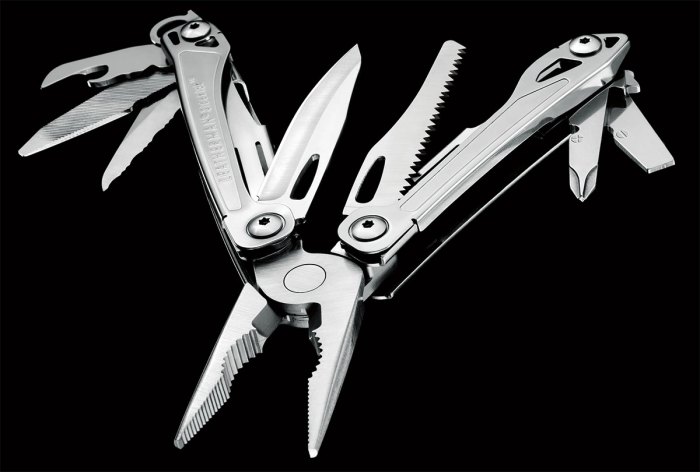
The Leatherman Sidekick ($70, leatherman.com) is a stainless-steel toolbox on your belt. The 7-ounce Sidekick has spring-action needle-nose and standard pliers, wire cutters and stripper, knife and serrated knife, saw, ruler, can and bottle openers, wood and metal file and three screwdrivers.
FOLDING OR FIXED KNIFE? KNOW THE POLICY
Knife policies vary among packs, troops, councils and camps when it comes to what blade types and lengths are allowed. Learn your unit’s policy before buying a blade of any kind. When it comes to types of knives, the Guide to Safe Scouting recommends “choosing the right equipment for the job at hand.”
BLADES
Most blades are made from strong and durable stainless steel. Blades are available in straight edge, serrated (jagged like a saw) or both. Bigger is not always better. A small, sharp four-inch-or-smaller blade can cut just as well as bigger knives but is much safer to handle and easier to maneuver in tight spots.
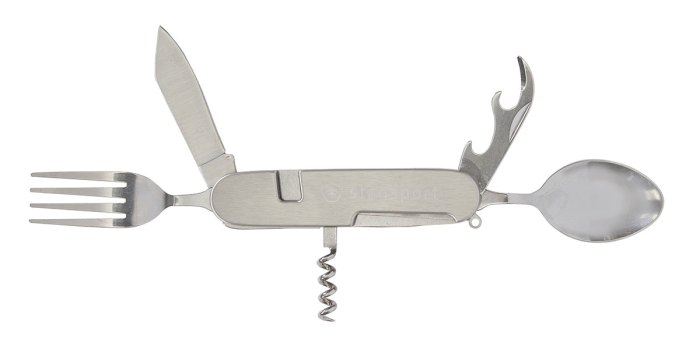
Stansport’s Folding Knife, Fork, Spoon Multitool ($15, stansport.com) has more than eating utensils. The tool, which separates into wo so you can use fork and spoon together, also has a can opener, corkscrew and chisel all in a belt-ready nylon carrying pouch.
PRICE AND QUALITY
You don’t have to spend a fortune to get a quality tool. Often, an inexpensive knife will do everything you want it to do. As prices go up, you’ll see small improvements in the quality and size of the blade.
CARE AND MAINTENANCE
Knives and multitools can last your whole life if you care for them. Wipe your pocketknife with a damp cloth to clean it, and add a drop of food-safe oil at pivot points to keep it at its best. Use a sharpener to keep your blade sharp.
“A sharp knife will work for you, while a dull one works against you,” says Kyle Owens of Work Sharp, a company that makes sharpeners.
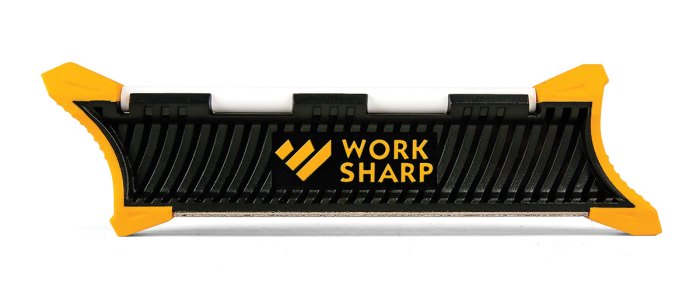
A great knife deserves an equally great sharpener. Work Sharp’s Pocket Knife Sharpener ($15, worksharptools.com) is small enough to stash in your pack, with a diamond sharpening plate and ceramic honing rod that have built-in angle guides so you can get a perfect edge on your pocketknife.
CARRY IT SAFELY
The smartest, safest place to stash your knife is in an easy-access spot in your backpack. You’re asking for trouble by wearing a fixed-blade knife on your belt. If you fall, the knife could rotate inward and you could land right on the blade.
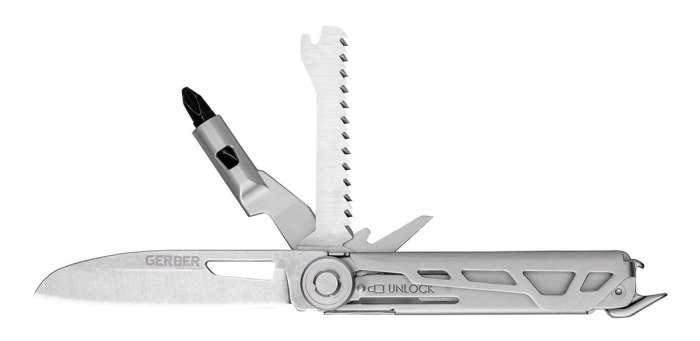
At only 3.1 ounces, Gerber’s Armbar Trade ($50, gerbergear.com) has eight essential tools, including a knife, saw, awl, driver, pry bar, hammer and bottle opener, packed into a surprisingly small and effective pocket clip tool.
TREAT YOUR KNIFE WITH RESPECT
Treating pocket knives with respect not only ensures your safety, but also keeps others safe. Here are a few major no-no’s:
- Throwing a knife
- Using a dull or dirty blade
- Handing a knife to someone blade first
- Cutting while others are within your “safety circle” (arm’s length)
- Carving into something that doesn’t belong to you
- Cutting toward your body
Using a knife requires responsibility. Bear Scouts can start carrying a pocketknife after completing the Whittling Chip requirements. Members of Scouts BSA must earn their Totin’ Chip, which also gives them the right to carry and use axes and saws.
I got a nice ozark trail one from walmart. Its way better than you would ever think. For my standereds atleast. We dont normaly do much high adventure in my small sd troop.
I have a leatherman rebar, and it has been very useful and durable
I use an old boy scout pocket knife. As well as a swiss army tinker. I advise against any knife made in China.
I have the Leatherman Free T4. Would recommend it. Extremely durable expert multitool.😀
I have the Gerber Wolf. Only $50 for a spring assisted knife with a lockable 4 inch blade.
VERY VERY useful lesson on pocket Knifes
Swiss Army Knife …. the best never gets dulll
high quality and practical
Sounds like a good lesson for pocket knifes 🔪🔪🔪🔪🔪
The knife i would reccomend is the Victoriax Swiss Army Spartan. has all of your basic stuff and is 20 bucks.
I have multiple knives but two favorites I got a Swiss Army knife withe one blade saw and can opener (getting a better one soon) and one of the most useful which helps proves the point you don’t need to spend a fortune on a multi tool is a cabelas brand multi tool with pryers wire cutter sicors both types of screw drivers can and bottle opener blade and saw that I found in a drop box for 6.37
I have the victorinox fieldmaster. It’s about the same as the huntsman but has a phillips screwdriver instead of a bottle opener.
I great knife brand is Bench Made. I have many of their knives and they work great.